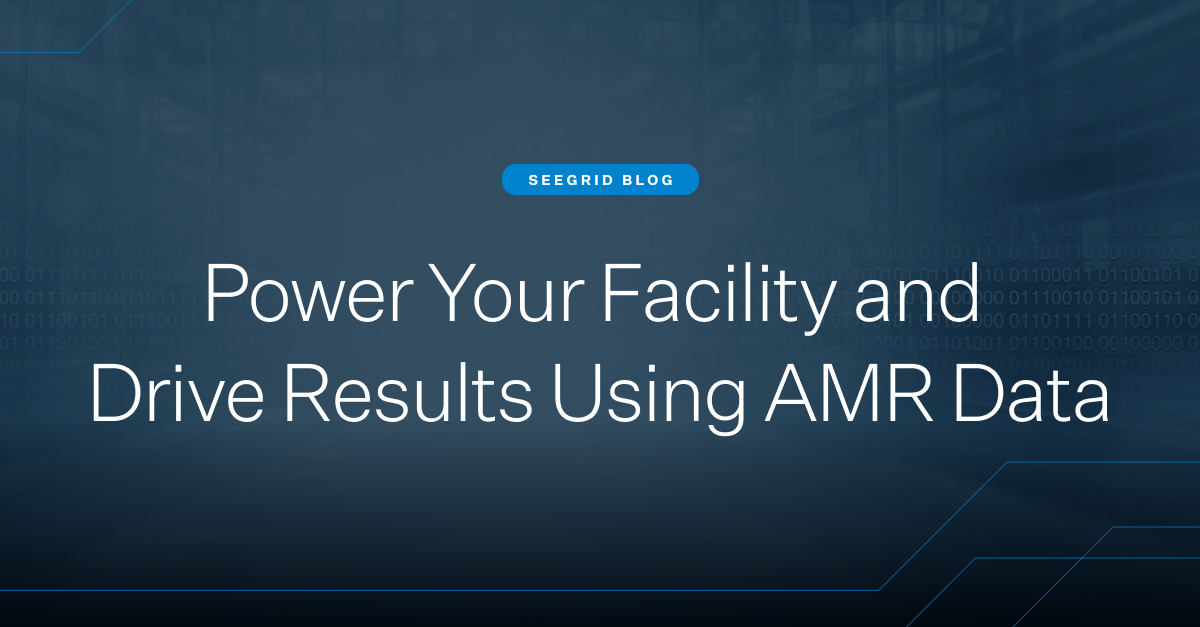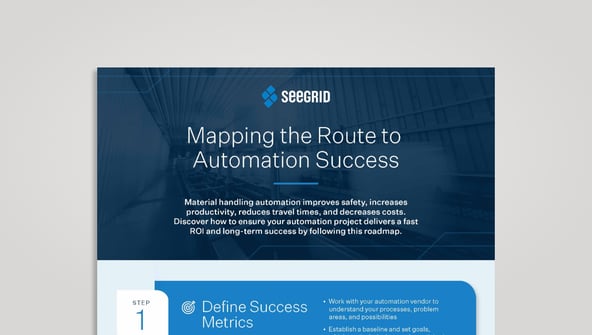Material handling automation can create immediate benefits for a company, including safer work environments, improved employee retention, boosted productivity levels, decreased travel times, reduced operating costs, and increased agility. However, if a company doesn’t partner with the right industrial automation vendor, they could risk derailing off course from their ongoing achievements.
It’s pivotal that a company works with a vendor who can help them understand big picture possibilities and effective next steps. Unfortunately, not all automation vendors provide this support and guidance. According to a McKinsey Automation survey, only 55 percent of institutions believe their automation program has been successful to date, with over half of respondents saying their program was harder to implement than expected.
The good news—it doesn’t have to be that way. In fact, it’s a completely different story with Seegrid. Our experts work as an extension of your team, supporting you throughout your entire automation journey.
We structure our services to make certain facilities run safely, predictably, and successfully to achieve goals today while also setting them up for success down the road. Through direct collaboration, we encourage customers to approach automation using a three-step process.
In this blog, discover the process that will lay the groundwork to achieve your day-to-day goals as well as big-picture initiatives as your company evolves and grows.
Step 1: Define Automation Success Metrics
Automation shouldn’t be thought of as a ‘set it and forget it’ solution. It should be approached as an ongoing process that will evolve over time as your business and processes evolve. Many factors will change throughout an automation journey, including consumer behaviors, demands, challenges, and product offerings. Ensure your automation solution can not only solve current needs of today but also future requirements.
Avoid getting stuck with a rigid system that needs to be overhauled and rebuilt in order to incorporate changes. By implementing a flexible automation solution, like Seegrid Palion autonomous mobile robots (AMRs), supply chains become more agile and resilient with the ability to quickly adjust to demands and growth.
Start by defining success. Work with your automation vendor to understand what’s possible and the steps you need to take to achieve your goals. Your automation vendor should provide recommendations based on your use cases, workflows, facility infrastructure, and needs.
Establish a baseline and define specific, measurable goals that will contribute towards achieving your overall long-term initiatives. Companies can focus on a wide range of topics based on the goals and KPIs—increased throughput, safety initiatives, achieving ROI, among many other measurements of success. The specific goals will be the small steps that move you along the route to accomplishing overall objectives. As you set targets, identify quick wins, automating activities with the highest potential, and then continue building a roadmap from there.
Step 2: Focus on Automation Adoption
It’s crucial to address the element of change with the employees involved as you experiment, make adjustments to their workflows, and introduce new technology. As humans, we are hardwired to fear and reject change. Simply put, humans typically want to do things the way they’ve always done it.
Tap into the human impacts of automation technologies to overcome this resistance. Show how the automation solution frees up human workers from inefficient, dangerous, labor-intensive, and repetitive tasks, creating opportunities for employees to focus on more creative, higher-value work. Support your employees to eliminate fear, helping them understand the positive impacts the technology and automated processes will bring.
An effective way to help drive automation adoption is to expand ownership with project champions. A project champion is a facilitator and trusted advisor who helps employees see the benefits of the changes and understand how to use the new technology. These individuals can bridge the gap between mobile industrial robotics and the workers. When employees feel comfortable and effectively collaborate with the new technology, the rate of adoption and attaining a return on investment will accelerate.
Step 3: Measure Your Automation Success
Remember to measure your progress frequently as your workforce adopts the newly introduced changes. With AMRs and fleet analytics software, you can easily expand visibility into workflows, track equipment, compare shift performance, identify bottlenecks, reduce downtime, increase deliveries, and gauge other key components to support your goals.
Use the data identified in the first step as the starting point. Compare how performance metrics from your automation software are stacking up against the initial baseline. Analyze what is working well, identify where improvements can be made, and take a deep dive into real-time AMR data visualizations.
Iterate and scale your success by assessing how the AMRs, processes, and people are performing together. With flexible automation in place and visibility into productivity, quickly and easily adjust to any necessary changes. The technology enables the operation to be more agile and proactively make changes.
Employees, supervisors, and management can observe and understand what is happening to minimize disruptions in their operational flow. Going a step further, utilize the data to prove ROI and make a business case to scale your fleet throughout your enterprise. Demonstrate tangible, objective value to upper management and gain support to expand your fleet and continuously improve.
Data-driven businesses are the ones that will succeed with informed, objective decision making. Never before has data access played such a critical role in the way our facilities function.
Drive Continuous Improvement with AMR Technology and Actionable Analytics
Implementing automation isn’t simply a “set and forget” process, nor is it a linear, one-way route to success. Automation needs to be approached as an ongoing effort that adapts to changes to yield continuous improvement.
Continue repeating these three steps in a tight loop. Define what success looks like and set specific goals, experiment and implement changes, support and empower your facility employees to drive adoption of new processes and technology, and measure to identify opportunities for further optimization to reach your overall goals. This three-step roadmap actually creates a flywheel where data drives action in a cyclical process to continuously improve.
When automation is approached as an ongoing process, you’ll continue pushing the flywheel faster. One moment isn’t responsible for success; getting a flywheel spinning smoothly takes a focused approach with specific goals and successful adoption. Data-driven decisions will push the wheel in the right direction, gaining momentum to accelerate growth and maximize the ROI. Set your operation up for success by focusing on continuous improvement with data-driven decisions.
Download our infographic to learn how to map your route to automation success:








